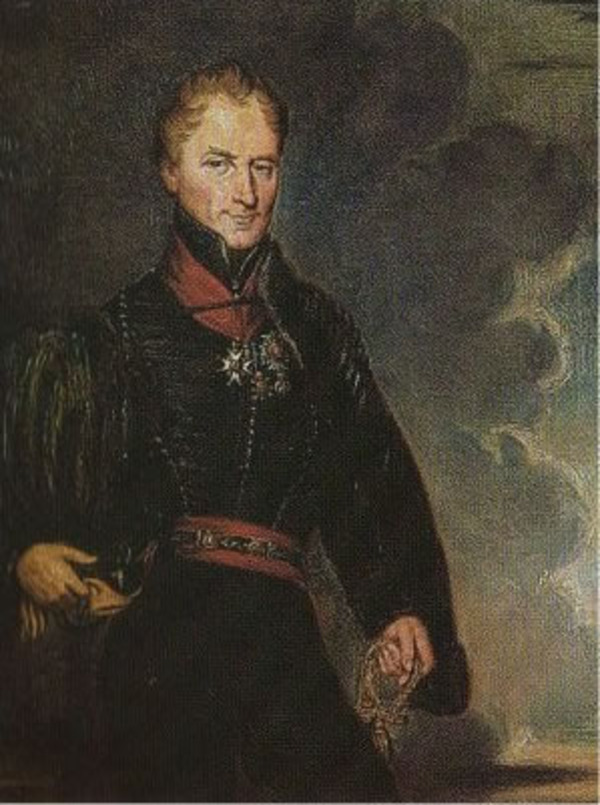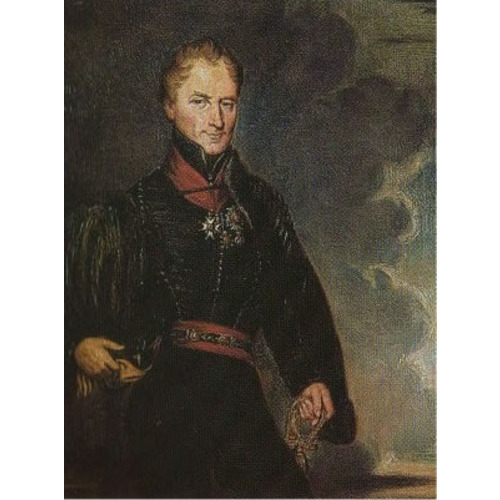
Source: Link
BECKWITH, Sir THOMAS SYDNEY, army officer; b. 1772, third son of John Beckwith, army officer; m. Clementina Loughnan; one son and at least two daughters; d. 15 Jan. 1831 at Mahabaleshwar, India.
Thomas Sydney Beckwith first saw active service as a junior officer in India (1791–98). In 1800 he joined the Experimental Corps of Riflemen, which was known successively after 1802 as the 95th (Rifle) Regiment and the Rifle Brigade; he distinguished himself by his training of this unit and, as lieutenant-colonel from 1803, by his leadership of it. After participating in expeditions to Denmark (1801 and 1807) and Hanover (1806), he served with great credit in Spain and Portugal (1808–11). In 1810 he was appointed to the staff as a deputy quartermaster general, and in 1812 he became an assistant quartermaster general. On 29 May 1812 he was made a knight bachelor.
In January 1813, Britain being at war with the United States, Beckwith was named an assistant quartermaster general in North America. At the same time he was given command of the landing forces in an amphibious operation intended to harry the Chesapeake Bay area and reduce American pressure on the Canadas. The landings did not go smoothly and were of questionable value as a diversion, though Admiral Sir John Borlase Warren claimed that they prevented 25,000 men from marching against the Canadas. The expedition was troubled by a command that was shared among Beckwith and admirals Warren and George Cockburn. Captain Charles James Napier, Beckwith’s second in command, blamed this “republic of commanders” for a failed attack on Craney Island, Va. Napier felt that Beckwith had “wanted neither head, nor heart, nor hand for his business; but he was not free to do what he thought wise, and run sulky when required to do what he deemed silly. . . . He is certainly a very clever fellow, but a very odd fish.” The expedition went to Halifax in September 1813.
Later that year Beckwith joined the staff in Lower Canada as quartermaster general; this post was of central importance during the final phases of the war. His department was responsible for the encampment, quartering, and movement of the army, duties that involved the collection of topographical and “secret” intelligence. In the Marquis of Wellington’s European army the quartermaster general had become the principal staff officer and adviser, and in Canada also Beckwith was consulted on a wide range of problems.
In the autumn of 1814 Beckwith took part in Sir George Prevost*’s abortive attack on Plattsburgh, N.Y., the conduct of which strained relations between Prevost’s staff and senior officers just arrived from Wellington’s Peninsular army. Despite his reputation, Beckwith did not escape the censure of the newcomers; Major-General Frederick Philipse Robinson was particularly critical of his failure to obtain proper intelligence. The offensive of 1814 was, however, conducted on an unprecedented scale for Canadian operations, at a time when all military departments had too few personnel, and lacked in particular staff having a thorough local knowledge; nor was responsibility for gathering secret intelligence clearly assigned.
Plattsburgh was Beckwith’s last experience of active service. It did not damage his reputation; indeed in January 1815 he was awarded the KCB. Appointed colonel commandant of his old corps, now the Rifle Brigade, in 1827, he became commander-in-chief at Bombay two years later and attained the rank of lieutenant-general in 1830. He died of fever in January 1831. According to a contemporary he had been “one of the ablest outpost generals, and few officers knew so well how to make the most of a small force.” Unfortunately his talents do not seem to have been put to the best use in North America.
Gentleman’s Magazine, July–December 1831: 83. William Napier, The life and opinions of General Sir Charles James Napier (4v., London, 1857), 1: 221. Select British docs. of War of 1812 (Wood). DNB. Hitsman, Incredible War of 1812. Reginald Horsman, The War of 1812 (London, 1969). J. K. Mahon, The War of 1812 (Gainesville, Fla., 1972). G. A. Steppler, “A duty troublesome beyond measure: logistical considerations in the Canadian War of 1812” (ma thesis, McGill Univ., Montreal, 1974). S. G. P. Ward, Wellington’s headquarters; a study of the administrative problems in the Peninsula, 1809–1814 ([London], 1957).
Cite This Article
Glenn A. Steppler, “BECKWITH, Sir THOMAS SYDNEY,” in Dictionary of Canadian Biography, vol. 6, University of Toronto/Université Laval, 2003–, accessed January 13, 2026, https://www.biographi.ca/en/bio/beckwith_thomas_sydney_6E.html.
The citation above shows the format for footnotes and endnotes according to the Chicago manual of style (16th edition). Information to be used in other citation formats:
| Permalink: | https://www.biographi.ca/en/bio/beckwith_thomas_sydney_6E.html |
| Author of Article: | Glenn A. Steppler |
| Title of Article: | BECKWITH, Sir THOMAS SYDNEY |
| Publication Name: | Dictionary of Canadian Biography, vol. 6 |
| Publisher: | University of Toronto/Université Laval |
| Year of publication: | 1987 |
| Year of revision: | 1987 |
| Access Date: | January 13, 2026 |



